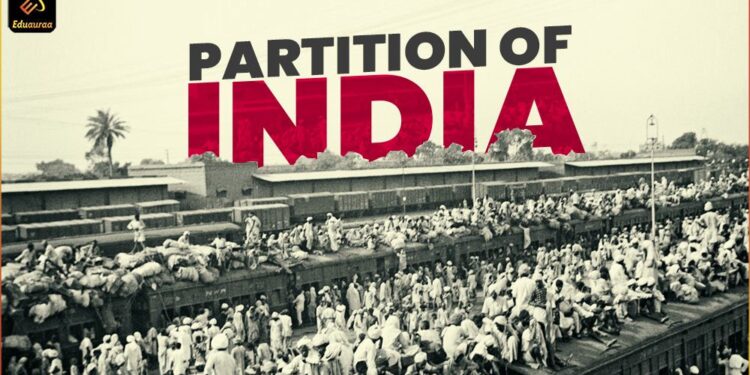Which event occurred as a result of india’s partition in 1947
Which event occurred as a result of india’s partition in 1947-The partition of India in 1947 was a momentous occasion that had a lasting impact on South Asian history. Widespread violence, large-scale migration, and social unrest accompanied the partition that resulted in the independent states of India and Pakistan. This incident set off a chain of political, social, and economic events that shaped the futures of the recently established countries and had a long-lasting effect on the surrounding area.
Political Consequences:
- Formation of India and Pakistan:
- The main and immediate result of the partition was the August 15, 1947, establishment of India and Pakistan as two independent nations. India turned into a secular nation, and Pakistan was created as a Muslim nation.
- Border Disputes and Conflict:
- The demarcation of borders as a result of the partition gave rise to disagreements and conflicts, especially in the areas of Punjab and Bengal. The borders were marked by the Radcliffe Line, which caused disputed territorial splits and long-lasting hostilities.
- Kashmir Conflict:
- Which event occurred as a result of india’s partition in 1947-The seeds of the protracted Kashmir dispute were planted during the partition. With a predominantly Muslim populace and a Hindu ruler, the princely state of Jammu and Kashmir turned into a hotbed of conflict. Despite several wars fought over the region, tensions and violence are still raised by this issue between India and Pakistan.
- Impact on Political Structures:
- The partition affected the political structures of both India and Pakistan. India adopted a democratic and secular system, while Pakistan experienced periods of military rule and struggled with issues related to the role of Islam in governance.
Societal Consequences:
- Mass Migration and Violence:
- One of the biggest mass migrations in history was brought about by the partition, with Muslims migrating to Pakistan and Hindus and Sikhs to India. Numerous acts of violence, communal riots, and atrocities occurred alongside the migration, causing a substantial loss of life and property.
- Communal Strife:
- As a result of the growing communal divide, there are still tensions and sporadic acts of violence among Muslims, Sikhs, and Hindus. Intercommunal relations in Pakistan and India are still impacted by the violence of the partition.
- Refugee Crisis:
- The mass migration created a refugee crisis, with millions of people displaced and struggling to find shelter and livelihoods in their new homelands. The resettlement process was challenging and left a lasting impact on the social fabric of both nations.
- Identity and Culture:
- The partition also influenced cultural identities. Language, dress, and customs became markers of religious and regional identities. This impact is evident in the diverse cultural landscapes of India and Pakistan today.
Economic Consequences:
- Disruption of Trade and Economy:
- The partition disrupted economic ties between regions that were now in different countries. The division of resources and assets was a complex process, impacting industries, agriculture, and trade.
- Loss of Human Capital:
- The mass migration resulted in a significant loss of human capital, as people with diverse skills and expertise moved across borders. This had economic repercussions for both India and Pakistan.
- Challenges of Rehabilitation:
- The process of resettling refugees and rebuilding regions affected by violence and migration posed economic challenges. Governments had to undertake rehabilitation efforts and invest in infrastructure development.
Also Read-
ADVERTISEMENT
ADVERTISEMENT
- Write a critical note on Passage to India
- What is the source of emily dickinson biographical details
- Interpret the Brahma in terms of Indian thought
International Relations:
- Impact on British Empire:
- The partition marked the end of British colonial rule in the Indian subcontinent. The events surrounding the partition highlighted the complexities and challenges of decolonization.
- Legacy of Divide and Rule:
- The partition served as a stark reminder of the British colonial authorities’ polarizing policies. The “divide and rule” tactic, which took advantage of social and religious divisions, had a long-lasting effect on the sociopolitical dynamics of the area.
- Role of International Organizations:
- The United Nations played a role in mediating conflicts between India and Pakistan. The issue of Kashmir, in particular, has been a subject of international concern and has led to several interventions by global organizations.
Long-Term Effects:
- Diplomatic Relations:
- The partition cast a long shadow over India-Pakistan relations. The two nations have had a tumultuous relationship marked by conflicts, wars, and occasional attempts at reconciliation.
- Nuclear Proliferation:
- The intense rivalry between India and Pakistan, rooted in historical conflicts, has extended to the realm of nuclear weapons. Both countries conducted nuclear tests in 1998, further complicating regional and global security dynamics.
- Demographic Changes:
- The demographic changes brought about by the partition continue to shape the populations of India and Pakistan. The religious composition of the two nations has been a defining aspect of their identities and political landscapes.
- Impact on Minorities:
- The partition had a significant impact on religious minorities in both countries. Issues of religious tolerance, minority rights, and communal tensions persist and influence internal politics.
- Literature and Artistic Expressions:
- The partition has been a recurring theme in literature, cinema, and artistic expressions in the Indian subcontinent. Numerous works of fiction, poetry, and films explore the human experiences and emotions associated with this historical event.
ADVERTISEMENT














